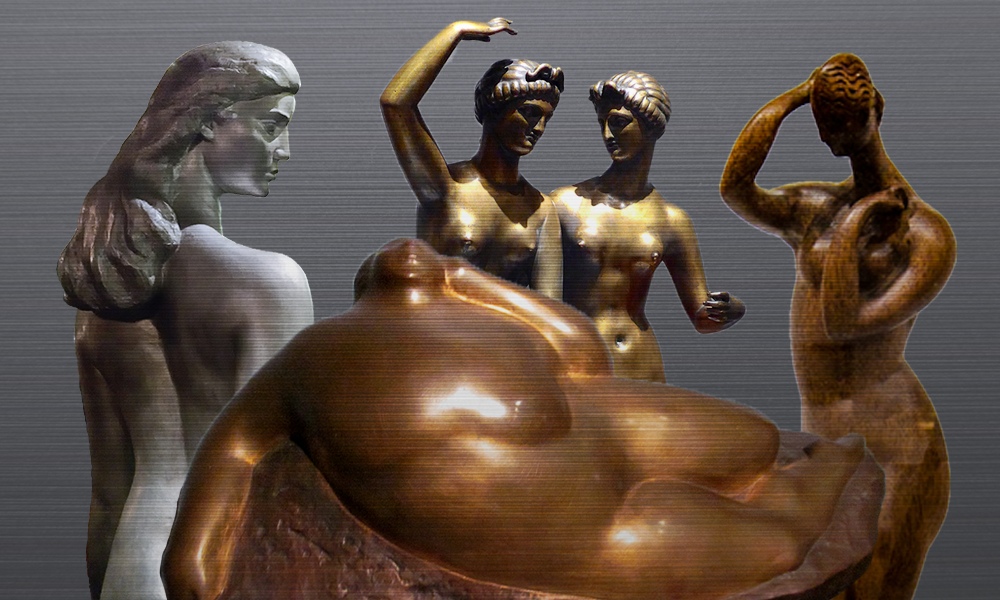Can an artistic form have a nationality? In one sense, of course not. Strictly speaking there is no Italian circle, nor any Romanian triangle. But we can see our art, and comprehend its strivings, in national terms. Lincoln Kirstein, a cultural impresario of great wealth and taste in the 1920s, once remarked that there was “a national tradition stemming from Europe, but nationally dependent.” He referred most immediately to the work of some of his friends who were intent on developing a national sense of sculpture. One of the sculptors involved in this avant-garde was Gaston Lachaise (1882-1935), whose 1933 “Head,” a bronze bust of Kirstein, depicts a powerful will, embodied in a portrait of a devout supporter of modernism. (He helped George Balanchine father modern ballet.) Lachaise had come to America from Paris to be with the woman whom he would eventually marry, Isabel Nagle. Artists from various places came to flourish in America for many different reasons, intent on a collective approach to new beginnings. Before long, Lachaise had befriended, influenced, and been influenced by three of his contemporaries, all of whom contributed to the American sense of sculpture identified by Kirstein. These three were William Zorach (1887-1966), Elie Nadelman (1882-1946), and Robert Laurent (1890-1970). The four innovative artists are the focus for a revelatory exhibit mounted at the Portland Museum of Art in Maine.
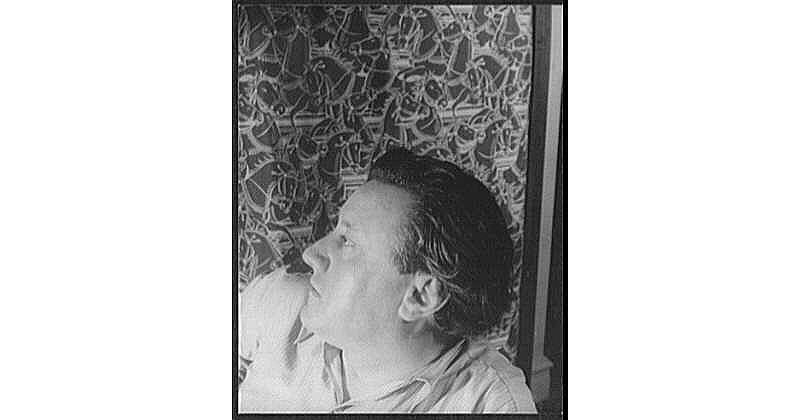
All these men were active in Paris in the decade preceding the Great War. Their birthplaces were scattered throughout Europe: Zorach was from Lithuania; Nadelman from Poland; and Lachaise and Laurent from France. They made the most of their talents as sculptors in America, where they arrived in the midst of an artistic and cultural revolution, bearing with them elements of a rigorous European training and a “New World” appetite for innovation. The insight of Kirstein about the relationship between European backgrounds and American expanses tells a key truth. Equally important, however, is how the four men influenced each other in a vortex of new styles and dedicated visions. The motto of “e pluribus unum” overstates the case for the artists — they were not securely unified — but their plurality offers several avenues into their combined and prodigious output.
All four of them struggled to achieve the main prize of an achieved style. Each deftly adapted the work of a mentor or model, but none fell into mere mimicry. Significantly, none is closely identified with a single work, for each continuously tried out new methods and materials. All showed their work at well-known galleries, first in Paris and then in New York. Together they entered pieces in the famous Armory Show of 1913 and did so with the assurance that painting perhaps led the way but sculpture wasn’t far behind. They also tended to cede the major patronage to the graphic artists such as John Singer Sargent, while they watched as Augustus Saint-Gaudens flourished in both his public works and private commissions. The graphic and plastic arts had begun to flourish after the turn of the century, and these four stayed true to modernism’s unique promise of renewal in all the arts while dedicated to the task of shaping materials by hand with an eye to the embodiment of formal forces.
Several instructive examples delight and instruct. Consider Lachaise’s bust of Kirstein, a lovely example of the artist paying thanks to a sophisticated patron. Set against this flattering portrait are two quite different works where we can watch the changing assumptions and results. First, there is the “Head” (1917), a small work by Laurent that has left behind Lachaise’s echoes of Rodin’s heroism of scale and intensity in favor of a polyglot exoticism that has suggestions of African and Japanese sculpture. The ethnic overtones of Laurent’s depiction of a female face are worlds away from Lachaise’s memorializing of a particular face. Lachaise would go on to continue employing a large sense of scale, especially with his standing nudes, but he, like Laurent, was willing on occasion to leave behind the grandiose elements in sculpture that are more akin to statuary, with its echoes of military might and imperial order. Meanwhile Laurent worked along the borders of a European aesthetic, invoking an ethnographic generality, and he was even eager to trust in the primitivist sensibility. Every sculptor opened himself to new forms, materials, and ambitions.
The other example contrasting Lachaise’s bust of Kirstein with a very different approach to making sculpture more immediate — that is, using materials more common than marble or brass — was Zorach’s “Waterfall” (1917). Zorach began making the work out of a block of wood that he was carving as a duplicate of his wife’s design for a block print. After working for a while following his wife’s lead, Zorach went further. He deepened the lines and details of the carving so that he ended up with a shallow bas relief. Working over the surface and the placid horizontal form, using sinuous lines for the water and a stoic medley of naturalistic details for the emotional air, Zorach concluded with a work that is simple on the surface but rich in suggestive shadows. Recalling distantly the styles of Marsden Hartley or Rockwell Kent, Zorach’s sense of nature borders on the symbolic, entertaining a fascination with how an aestheticizing geometry always invokes a higher level of order and interest.
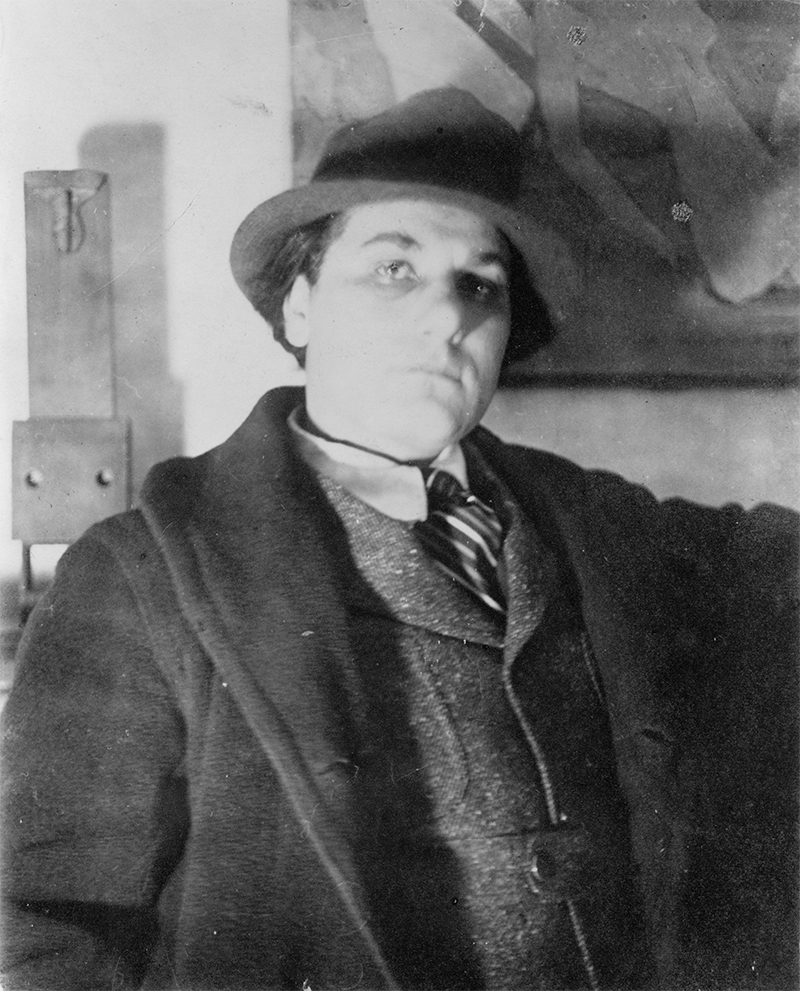
Zorach and Laurent may have simply avoided — especially in their early work — a mere copying of the styles of official sculpture, but they went further. The use of common materials was part of the innovative spirit, but so, too, was the openness to a new understanding of their chosen subjects and their delight in new senses of space, both as the consolidation of depth and the capture of motion. Along with Nadelman’s love of folk art, the other three men introduced a lively spirit that sought to make the sculpture more like a familiar token of affection than a grand gesture of pomp and circumstance. Speaking broadly, these artists made the historic journey from the grandeur of Rodin to the commonplaces of Louise Nevelson and Robert Rauschenberg. No one of them achieved the widespread public admiration of Alexander Calder, nor, it could be argued, the innovative use of motion in his work. And it isn’t necessary to see them as forerunners of minimalism and the severe aesthetics of Donald Judd or Richard Serra in order to accommodate their contributions to American sculpture.
Of the four sculptors the exhibit includes, perhaps the one most immediately marked by an American sense of culture is Nadelman. A typical mid-career work, “Dancer” (1921-24), makes clear how motion can play a key role in a solid sculpture. Here the material is wood, but Nadelman enhances the subject by using joins of elements that increase the sense of a freeze-frame effect. Adding to curves and folds not easily drawn out of a solid block, the overall effect is created by virtually eliminating the dancer’s hands and adding a wash of color in parts to pose the stance between abstraction and the blur of a captured detail. The dancer delights in part because of her solitary form. But near the same period Nadelman magnifies the effects with “Tango” (1920), where it is now a couple whose motions appear virtually stopped. The shape and placements of the pair’s arms increase exponentially the delights of volume and gesture. Both works also indicate one of Nadelman’s sources of inspiration, the music and dance observed at the burlesque shows that so entertained the artist. Earlier, in 1909, he had exhibited at the Galerie E. Duret in Paris, and went on to his first appearance in America in Stieglitz’s 291 gallery, one of the birthplaces of American modernism. Along with his wife he indulged in some institutional building himself, creating the Museum of Folk Art and Peasant Arts in 1926, in Riverdale, New York. Alas, the Depression hit him hard and he had to sell his collection in 1929.
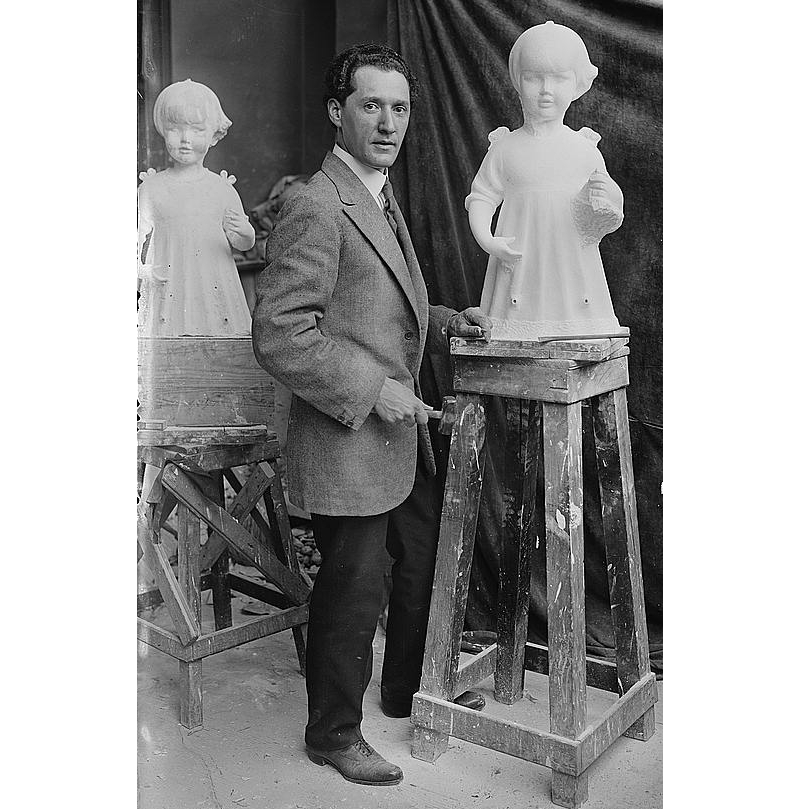
Perhaps the artist most different from his other three companion sculptors is Robert Laurent, who took a path that didn’t abandon classical themes and attitudes. For Laurent it was the female form that held the center of sculpture’s aims and practices; while all four men held to a commitment to the nude as a hallmark of sculptural skill and dedication, it was Laurent who pursued the mythical motifs and themes that have held a high place in sculpture since the Greeks. Laurent’s inclination towards a mystic spirituality bolstered his sense of a commitment to classicism, though he also used the tradition as a way of anchoring his interests. Traditional learning also showed in his decision to use preliminary drawings as a way of anchoring his sculptural practice. His fate as an artist was formed when he came under the tutelage of Hamilton Easter Field (1873-1922), a wealthy connoisseur and critic as well as an artist in his own right. Field, heir to a fortune made by Haviland & Co., a family-owned porcelain firm, met Laurent when Laurent was only nine years old. He eventually brought the boy to America, where Laurent put into practice the high-minded mix of exoticism and modernism favored by Field. One immediate outcome of this extended patronage saw Laurent adopt the practice of executing preliminary drawings for his sculptures. The exotic part of his practice came about with his interest in Asian culture, which developed when he worked for a dealer in Japanese prints. The modernist part focused on his use of alabaster, in addition to marble and bronze, taking the sensuous material in new directions, praising its translucence as a form of spiritual energy.
Laurent set himself apart from the other three of his contemporaries on several scores, perhaps most so when it came to his willingness to use ancient and classical motifs and subjects. One of his most striking pieces was his limestone portrait of Hero and Leander; however, in terms of renown, his larger-than-life Goose Girl (1932), placed in the lobby of the Radio City Music Hall, garnered praise — and some controversy because of its frank nudity — above all his other works. Though he had many gallery shows in America, his years of teaching at Indiana University, followed by many years at the Summer School of Graphic Arts in Ogunquit, Maine, restricted his reputation. (It was Field who founded the school and funded it for many years; he also bequeathed his estate to Laurent and other artists.) Laurent’s network of friendships and associations differed markedly from those of Nadleman, Lachaise, and Zorach, and in some ways Laurent’s modernism was the most programmatic of the group.
Lachaise and Zorach were the members of this group of four who were most visible and lauded in the early period when modernism was slowly but surely winning the interest and respect of the art world. This is true in large measure because the two men conveyed a range of attitudes in their work while steadfastly refining and strengthening their modernist styles. Lachaise, for instance, managed to work on a large-scaled sense of the human body, especially the female nude, while exploring questions of dynamism and form. His standing nudes, some of which were larger than life-size, became iconic representations of something like the force of the eternal feminine. Such an idea is now almost universally out of fashion, as many feminists find such Jung-like concepts turning into subtle forms of stereotyping and projected fantasies. One doubts that there will be a revival of interest in Lachaise anytime soon. Zorach, too, had a spiritual dimension to his work, and his sleek surfaces engendered a refined tactility that energized his interest in how forms blend with and define one another. His Spirit of the Dance (1932) was inspired by Isadora Duncan, who was herself one of the leading figures in what might be called performative modernism. Duncan and others, like Lachaise, reached back into the archaic spiritual realm in order to advance the cultural renewal they felt to be a necessity.
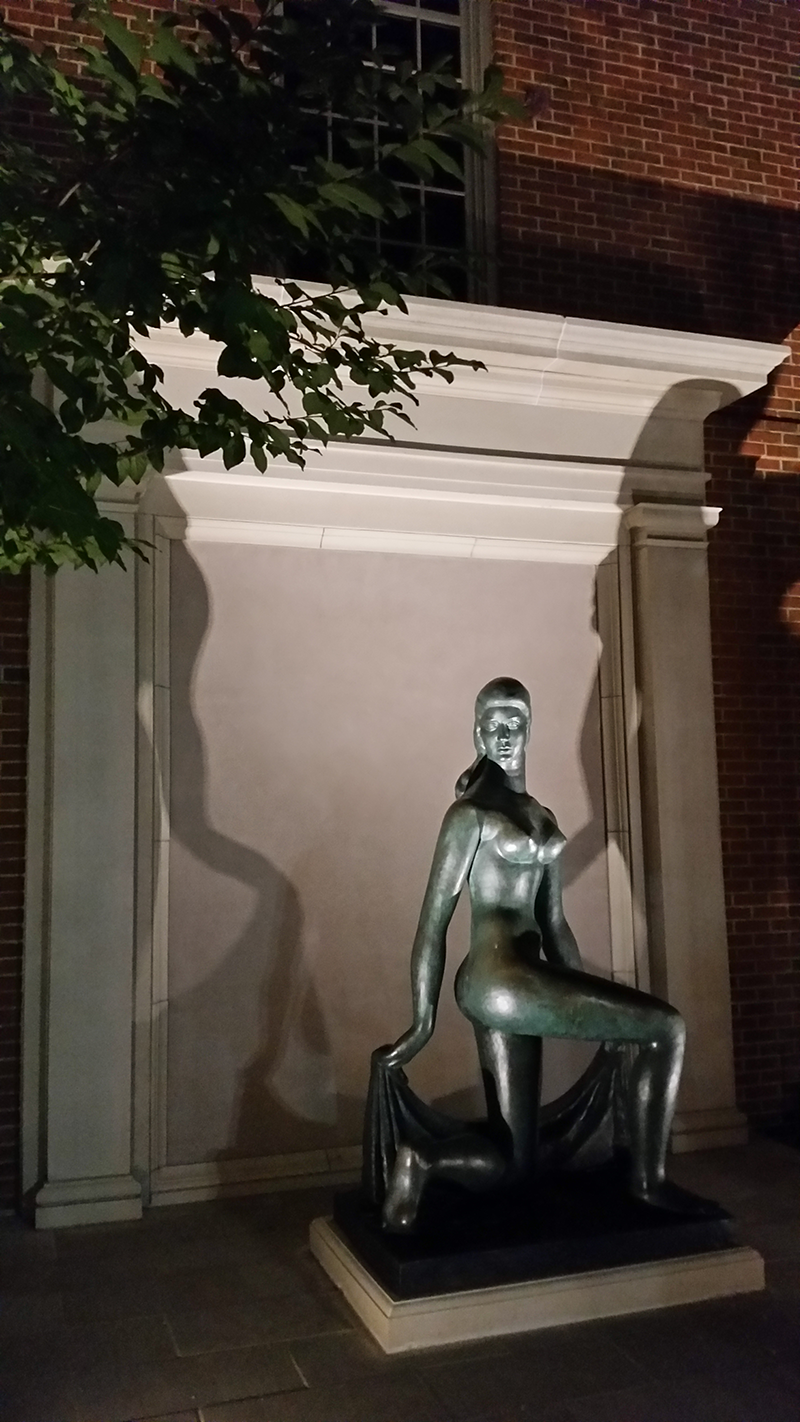
Lachaise, of course, pursued his vocation as a full-fledged modernist artist. This meant he lived the bohemian life in Greenwich Village and spent many summers at art colonies and summer schools where the details and the foundations of modernism were devotedly attended to. In this his closest friend of the four sculptors was Zorach. The men shared much in common, and while their artistic output shows marked differences, much of what they shared is significant. First among the shared elements was their separate marriages to women they met in Paris who shaped their careers in key ways. For Lachaise, this woman was Isabel Nagle, who became his muse and chief model. For Zorach, it was Marguerite née Thompson, an important artist in her own right who guided his career and collaborated with him in various media. Both men spent time in summer colonies and art schools, the working centers of modernist styles and shared values. Both men enjoyed a certain amount of success — Lachaise received much high praise throughout the last years of his life (he died at age 53 of leukemia), and Zorach and his wife, who participated in several artistic circles, were admired by dozens of fellow artists and cultural figures. In all, both struggled financially despite receiving support from Easter Field and some valuable commissions.
Comparing and contrasting the salient parts of their lives and characters as artists can shed considerable light on the output of both men. The range of Zorach’s subjects is broader than that of Lachaise, and he can employ whimsy on occasion. His marble portrait of his young daughter in her toy car is a delight (“Kitty Kar”), showing us the child in command. But much can also be gained from looking at two works that are justifiably regarded as their separate masterpieces. For Lachaise, this is his imposing Standing Woman of 1932; for Zorach, it is his more than life-size Spirit of the Dance (finished in the same year). Both are female nudes, and in both works it is scale and position that convey the meaning in the works.
•
Standing Woman merits its reputation. At a few inches over seven feet, the woman appears monumental and yet expansively alive. So large and rounded are her breasts and buttocks and thighs that, without the benefit of the context, some might see the form as comic. Watching it (rather than just looking at it) it is easy to see that it is far from bulky, and the longer one watches, the more rightly sized the figure becomes. The female form becomes a centered apparition. But as we attend to the weight, the luster of the bronze relieves any heaviness. A similar thing happens with size, which makes a turn towards gracefulness. This results from the tapering of the limbs, both arms and legs, and the sheen of the finish. It’s as if the phenomenological experience of the statue is centered in its relation to its weight and size.
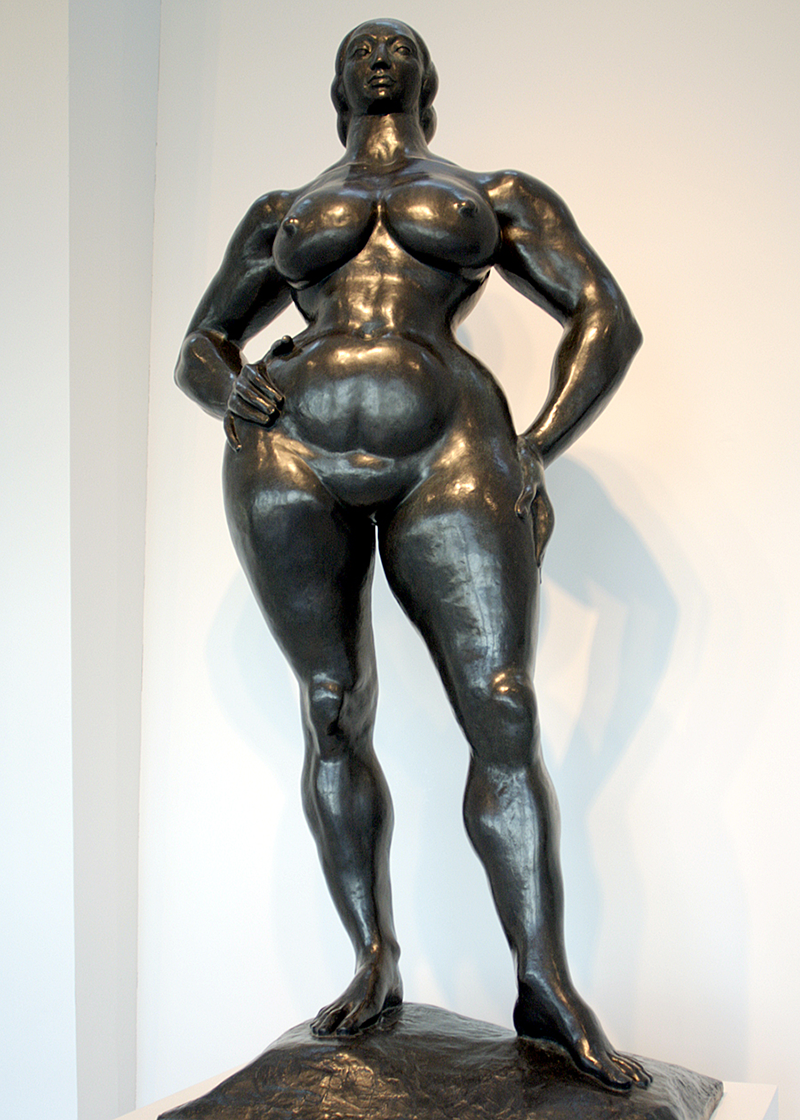
Zorach’s Spirit of the Dance works on rather different principles. A large female nude, just over nine feet tall, is kneeling on one knee, with her hand holding a draping cloth that covers her lower torso and then falls to the ground. She appears serene, presumably in the moments just before, or more likely after, her performance. Though containing only a hint of a narrative, the woman seems to hold an interior feeling; she is inward while Lachaise’s subject projects an outward energy. Though scale and position are still paramount forms of meaning, Zorach’s sense of naturalism propels the meaning. His naturalism bestows a hairdo on the woman, a French braid with a long “tail” over her shoulder. Unlike Lachaise, Zorach doesn’t insist on a transcendent realm, and despite the word “spirit” in the title, we see an individualized woman and one engaged in a human activity rather than serving as a beacon or emanation. The spirit, especially in dance, is embodied. But the rich medley of lines and curves shows how the body can be in the world and, indeed, draws the world into it.
Two modernist masterpieces, created by two men who came to America and found — and helped further enrich — the field of American sculpture. •
Feature image created using images from Ali Eminov, Ralph Daily, Sharon Mollerus, and rocor via Flickr (Creative Commons). Other images courtesy of DavyRocket, and Michel Curi via Flickr (Creative Commons).
